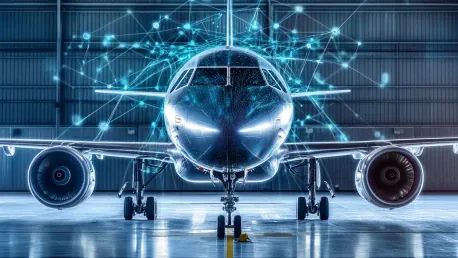The modern aviation industry places a high premium on ensuring the highest levels of safety and operational efficiency, where even the smallest oversight can lead to significant risks. In a dramatic illustration of this principle, Airbus recently leveraged the power of big data to proactively tackle a potentially catastrophic issue with the Airbus A330neo and another concerning the A320. These instances underscore a significant milestone in the use of advanced data analytics to enhance aircraft safety, providing a roadmap for future developments in the field. Airbus’s intervention not only averted potential disasters but also demonstrated the critical role of integrated data platforms such as Skywise in modern aviation safety.
The Critical Discovery
On August 17, 2022, the European Union Aviation Safety Agency (EASA) issued an emergency airworthiness directive (AD) in response to reports of leaking high-pressure valves in the engine bleed air system of the Airbus A330neo. This AD was a swift and decisive action, aimed at mitigating the risk posed by this malfunctioning component, and was swiftly adopted by the Federal Aviation Administration (FAA) a day later. The seriousness of the issue demanded immediate measures, including restricting certain takeoff configurations to prevent potential catastrophic failures. The rapid response from multiple regulatory bodies highlighted the severity of the malfunction and the importance of timely and accurate data interpretation in addressing it.
The circumstances surrounding this critical discovery emphasize the gravity of the reported high-pressure valve leaks. The leaks, if left unaddressed, could have allowed high-pressure, high-temperature air to escape into the aircraft’s wing structure, posing a significant risk of structural failure. The urgent actions taken by EASA and the FAA underscore the essential role of big data platforms in modern aviation, serving as an early warning system that allows airlines and regulatory bodies to take preemptive actions to ensure passenger safety and aircraft integrity.
Data as a Diagnostic Tool
The heart of this detection lies in Airbus’s use of Skywise, its comprehensive big data platform designed to collect and analyze data from numerous sensors and operational parameters across its fleet. By meticulously examining sensor data and operational metrics, engineers pinpointed that specific takeoff configurations were influencing the bleed monitoring computer (BMC) software to malfunction. This malfunction, in turn, placed undue stress on high-pressure valves, ultimately causing the leaks. The ability to correlate vast amounts of data swiftly and accurately demonstrated the indispensable role of Skywise in modern aircraft diagnostics and safety measures.
The proficiency of Skywise extends beyond merely identifying malfunctions. Its advanced analytical capabilities allow Airbus to predict potential issues before they manifest into critical failures. By leveraging extensive data sets, engineers can scrutinize patterns and outliers that would be impossible to detect using traditional diagnostic methods. This preventative approach underscores a paradigm shift in aviation safety, where potential threats can be mitigated proactively, ensuring that corrective actions are taken long before a situation escalates to a critical level.
Importance of Skywise
Skywise was launched by Airbus in 2017, and since then, it has become an essential tool in the company’s operational and safety framework. Integrating data from airframes, engines, and a multitude of subsystems, Skywise provides a holistic view of aircraft health and performance. Processing up to one terabyte of data daily for advanced models like the A350, Skywise’s depth and breadth of data integration enable Airbus to push the boundaries of predictive maintenance and operational efficiency. More importantly, Skywise’s arsenal of big data tools extends to safety investigations, as demonstrated in the A330neo incident.
Although Skywise’s primary goal is to optimize operational efficiency and predictive maintenance, its capabilities in safety oversight are invaluable. By cross-referencing data from various aircraft systems, Skywise identifies potential anomalies that might otherwise remain undetected. This early detection mechanism exemplifies how the platform’s operational insights translate into robust safety protocols. The vast data repository of Skywise not only enhances routine maintenance but also transforms the approach to emergency diagnostics, allowing for data-driven responses that prioritize passenger and crew safety.
Case Study 1: The A330neo Incident
Engineers working on the A330neo detected anomalies when they analyzed high-pressure valve leaks using Skywise data. The analysis revealed that the BMC software, under certain takeoff configurations, failed to manage the high-pressure valves adequately, causing undue stress and subsequent leaks. Identifying these anomalies was crucial in understanding the underlying issues and preventing potential catastrophic outcomes. The leaks threatened to release high-pressure, high-temperature air into the wing structure, posing a significant risk of structural failure.
The impact analysis painted a grim picture, predicting that continuous operation under the same conditions could lead to severe consequences. The high-pressure valve leaks were not merely a technical hiccup but a looming threat that demanded immediate attention. Airbus’s recommendation for an emergency AD was a testament to their proactive stance on safety, prioritizing the well-being of passengers over operational disruptions. Subsequent technical fixes were mandated through ADs, addressing both hardware and software issues, and ensuring the resumption of safe, unrestricted operations.
Case Study 2: The A320 Incident
In another instance highlighting the critical role of big data, an April 2022 incident involving a TAP Air Portugal A320 brought to light control issues stemming from a thrust reverser deployment during an aborted landing. Supported by data from Skywise, the investigation uncovered that the left-hand engine did not spool up as expected owing to a discrepancy in the electronic control unit (ECU) logic, which processed engine statuses independently. The discovery pointed to a rare but significant flaw that required immediate rectification to prevent recurrence.
Skywise data analysis revealed that such control issues, while rare, were not isolated occurrences. The platform indicated that these incidents happened approximately once per million flights, translating to about one event monthly across the fleet. Despite being an infrequent anomaly, the potential consequences warranted urgent corrective measures. Airbus implemented technical modifications to the ECU software to address the flawed logic, ensuring that the engines processed data harmoniously. Additionally, they provided enhanced training materials for pilots, reinforcing adherence to standard operating procedures. This case demonstrated the platform’s efficacy in isolating and resolving rare but systematic issues through continuous data monitoring.
Integrating Human Insight
While the power of data analytics is undeniably transformative, its utility is significantly enriched by human expertise. Engineers and safety analysts interpret the vast datasets provided by platforms like Skywise, making informed decisions about necessary actions and safety measures. Human insight adds a layer of contextual understanding that pure data analysis might overlook. Operator reports are crucial in identifying smaller issues that could escalate over time, feeding valuable information back into the data matrix and allowing for more precise and comprehensive safety solutions.
The collaboration between human insight and data analytics is reinforced by regulatory bodies like the EASA, which emphasize the importance of comprehensive occurrence reporting. Recognizing weak signals that may not form concrete patterns provides a holistic approach to safety management. This blend of technology and human expertise ensures that the aviation industry not only responds to existing problems but also anticipates and mitigates potential risks. Such integration fosters a safety culture where data-enhanced human judgment leads to continually evolving, proactive safety protocols.
Future Directions
Looking ahead, the role of Artificial Intelligence (AI) and Machine Learning (ML) in aviation safety is poised to expand significantly. These advanced technologies have the potential to revolutionize safety alerting systems by identifying outliers and irregular data patterns indicative of underlying issues. AI and ML can flag potential problems far earlier than traditional methods, offering a predictive dimension to safety protocols. However, their implementation must be carefully managed to ensure accuracy and reliability. The combination of AI/ML technologies with human oversight will be crucial for their successful integration into existing safety frameworks.
As AI and ML algorithms become more sophisticated, their ability to process and analyze vast datasets will provide even greater insights into aircraft operations and maintenance. Identifying subtle, emergent patterns that may precede more significant issues enables engineers and safety personnel to implement preemptive measures. This proactive approach marks a significant advancement in aviation safety, moving from reactive to predictive and preventive strategies that mitigate risks well before they manifest. The future of aviation safety hence seems promising, with advanced data analytics paving the way for continuous improvements in both efficiency and safety.
Closing the Safety Loop
Continuous monitoring and feedback are essential for ensuring that safety systems evolve in response to real-world conditions. By analyzing data from daily operations and integrating new insights into safety protocols, manufacturers can continually refine and enhance aircraft models and systems. This feedback loop ensures that safety measures are not static but dynamically adapted to address emerging risks and evolving threats. Informed by the latest data, these adaptive protocols represent a pivotal shift in maintaining and elevating safety standards.
The collaborative effort between data analytics and human expertise forms the backbone of this evolving safety landscape. By validating real-world data against existing safety protocols and incorporating new findings, the aviation industry can maintain a robust, proactive approach to safety management. This continuous cycle of monitoring, feedback, and adaptation promises to enhance the reliability of safety systems, ensuring that they remain effective and responsive to new challenges. The integration of advanced data analytics, AI, and ML, combined with human insight, ushers in an era of unprecedented safety in aviation.
Conclusion
In the modern aviation industry, ensuring the highest levels of safety and operational efficiency is paramount, as even minor oversights can lead to significant risks. A compelling example of this principle involves Airbus, which recently harnessed the power of big data to proactively address a potentially catastrophic issue with the Airbus A330neo and another problem concerning the A320. These incidents highlight a major advancement in the use of sophisticated data analytics to enhance aircraft safety and offer a promising direction for future developments within the field.
Airbus’s prompt action did more than just prevent potential disasters; it also illustrated the vital role of integrated data platforms like Skywise in contemporary aviation safety. By leveraging these advanced tools, Airbus was able to detect and rectify issues before they posed real threats, underscoring the importance of proactive measures in maintaining the integrity of aviation operations.
This forward-thinking approach by Airbus not only sets a precedent for the industry but also reaffirms the crucial importance of continuous monitoring and data integration in ensuring the ongoing safety and reliability of aircraft. In summary, Airbus’s use of big data analytics marks a significant milestone, showing how technology can be employed to predict and prevent issues, ultimately safeguarding lives and improving the overall efficiency of air travel.









